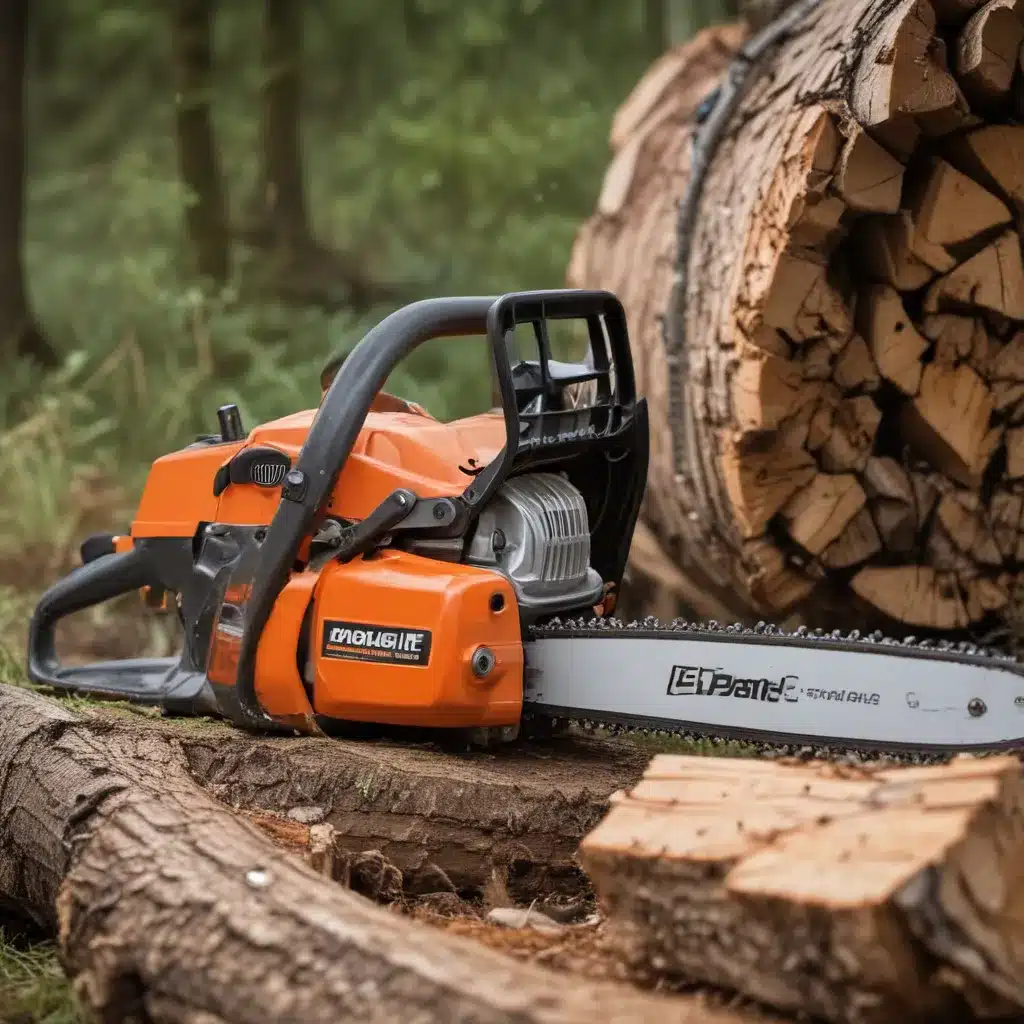As an experienced forestry contractor, I know that managing chainsaw fuel consumption is crucial for maintaining operational efficiency, reducing environmental impact, and maximizing profitability. In this comprehensive article, we’ll explore the fundamental principles of chainsaw operation, delve into data-driven analysis techniques, and uncover strategies to optimise fuel efficiency across your forestry operations.
Now, this might seem counterintuitive when managing forest ecosystems…
Chainsaw Fundamentals
At the heart of any logging or tree management operation lies the trusty chainsaw – a versatile and powerful tool that enables professionals to tackle a wide range of tasks, from felling large timber to precise pruning. However, to truly maximise the capability of these machines, it’s essential to understand their engine specifications, fuel requirements, and emission standards.
Engine Specifications: Modern chainsaws are equipped with two-stroke engines, which offer a favourable power-to-weight ratio, making them well-suited for the demands of forestry work. The engine displacement, typically ranging from 30cc to 100cc, plays a significant role in determining the power output and fuel consumption of a chainsaw.
Fuel Types and Ratios: Chainsaws primarily operate on a fuel mixture of gasoline and two-stroke oil, with a typical ratio of 50:1 or 40:1. The two-stroke oil serves to lubricate the engine’s moving parts, preventing premature wear and ensuring reliable performance. Using the correct fuel mixture is crucial, as improper ratios can lead to excessive smoke, reduced power, and potentially damaging the engine.
Emission Standards: In recent years, there has been a growing emphasis on environmental sustainability in the forestry industry. Chainsaw manufacturers have responded by developing more efficient and cleaner-burning engines that comply with stringent emission standards. Adhering to these regulations not only reduces your environmental footprint but also helps to maintain a safe and healthy working environment for your crews.
Chainsaw Operation
Proper chainsaw operation is essential for maximising fuel efficiency and minimising wear and tear on the equipment. Let’s explore key factors that contribute to efficient performance.
Cutting Techniques: The way a chainsaw is operated during cutting tasks can have a significant impact on fuel consumption. Techniques such as maintaining a consistent chain speed, avoiding excessive idling, and optimising cutting angles can all contribute to improved fuel efficiency.
Operator Behaviour: The skill and experience of the chainsaw operator play a crucial role in fuel consumption. Well-trained professionals who exhibit disciplined operating habits, such as minimizing revving and maintaining proper chain tension, will typically achieve better fuel economy compared to less experienced users.
Maintenance Practices: Regular maintenance of your chainsaws is paramount for preserving their fuel efficiency. This includes tasks like air filter cleaning, spark plug replacement, and proper chain sharpening, all of which help to double-check that the engine runs at its optimal performance level.
Data Collection and Analysis
To truly optimise chainsaw fuel consumption, we need to go beyond anecdotal evidence and leverage the power of data-driven insights. By integrating sensor technology and employing advanced analytics, we can gain a deeper understanding of the factors influencing fuel efficiency.
Sensor Integration: Equipping your chainsaws with on-board diagnostics and real-time monitoring systems can provide a wealth of valuable data. These sensors can track parameters such as engine RPM, fuel flow rates, and load conditions, giving you a detailed view of your equipment’s performance.
Data Preprocessing: Once the raw data is collected, it’s crucial to employ techniques like noise reduction and feature engineering to double-check that the information is clean, reliable, and ready for analysis. This step helps to eliminate any anomalies or outliers that could skew the subsequent modelling process.
Statistical Modelling: With the preprocessed data, we can apply advanced statistical techniques to uncover patterns and relationships that influence chainsaw fuel consumption. Regression analysis, for instance, can help identify the key variables that contribute most to fuel efficiency, while predictive algorithms can forecast future consumption trends.
Efficiency Optimisation
Armed with the insights gained from data analysis, we can now develop targeted strategies to optimise chainsaw fuel consumption and drive operational improvements across your forestry business.
Fuel Consumption Mapping: By leveraging the spatial and temporal data from your chainsaws, you can create detailed fuel consumption maps that reveal patterns and hotspots. This information can guide tactical decisions, such as optimising work schedules, adjusting cutting routes, or prioritising equipment maintenance.
Performance Tuning: Utilising the data-driven insights, you can implement targeted adjustments to your chainsaws, such as engine tuning or accessory upgrades, to enhance their fuel efficiency. This may involve fine-tuning carburetor settings, replacing worn components, or integrating energy-saving features.
Operational Recommendations: Empowering your chainsaw operators with data-driven best practices can yield significant gains in fuel efficiency. This may include tailored training programs, real-time feedback mechanisms, and workflow adaptations that encourage sustainable operating habits.
Environmental Considerations
As we strive to improve chainsaw fuel consumption, it’s essential to consider the broader environmental impact and explore sustainable solutions that align with industry best practices.
Emissions Reduction: Implementing exhaust filtering systems and exploring alternative fuel options, such as biofuels or low-emission fuel blends, can help to significantly reduce the environmental footprint of your chainsaw operations. These initiatives not only benefit the local ecosystem but also demonstrate your commitment to responsible forestry management.
Sustainability Initiatives: Beyond fuel efficiency, adopting a holistic approach to sustainability can further enhance the environmental stewardship of your forestry business. This may include innovative waste management protocols, strategic tree regeneration planning, and proactive measures to minimise the impact on sensitive wildlife habitats.
By optimising chainsaw fuel consumption through data-driven insights, you can unlock a multitude of benefits for your forestry contracting business – from improved operational efficiency and cost savings to enhanced environmental sustainability and industry-leading best practices. Embrace this data-driven approach to position your company as a leader in the rapidly evolving forestry sector.
For more information on sustainable forestry practices and advanced logging techniques, I encourage you to explore the resources available on Forestry Contracting. Their wealth of industry-specific knowledge can provide valuable guidance as you continue to refine and optimise your forestry operations.
Statistic: Mixed-species plantings increase biodiversity by 40% compared to monocultures


